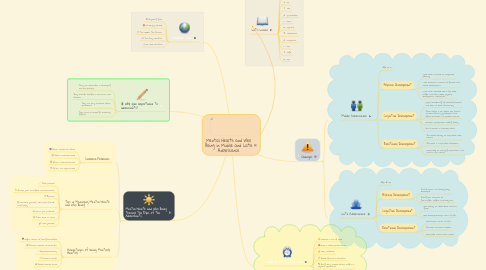
1. Common Lines
1.1. Anything goes!
1.2. No kill joy allowed
1.3. The Wilder The Better
1.4. You Only Live Once
1.5. Go with the Flow
2. Mental Health and Well Being through the Eyes of the Adolescents
2.1. Common Problems
2.1.1. Often viewed as rebels
2.1.2. Often misunderstood
2.1.3. Often underestimated
2.1.4. Often not appreciated
2.2. Tips in Managing Mental Health and Well Being
2.2.1. Think positive
2.2.2. Accept your strengths and limitations
2.2.3. Exercise
2.2.4. Surround yourself with close friends and family
2.2.5. Share your problems
2.2.6. Take time to relax
2.2.7. Love yourself
2.3. Advantages of being Mentally Healthy
2.3.1. Higher chance of being successful
2.3.2. Positive outlook towards life
2.3.3. Improved memory
2.3.4. Relieves stress
2.3.5. Boosts overall mood
3. Why give importance to adolescents?
3.1. They are vulnerable in developing mental illnesses
3.2. They undergo changes in the brain and behavior
3.3. They are very sensitive about themselves
3.4. They tend to challenge authority figures
4. Let's Learn
4.1. M- anageable
4.2. E- mpathy
4.3. N- ice
4.4. T- alk
4.5. A- pproachable
4.6. L- isten
4.7. H- appiness
4.8. E- nthusiastic
4.9. A- cceptance
4.10. L- ove
4.11. T- ough
4.12. H- ope
5. Changes
5.1. Middle Adolescence
5.1.1. Age: 15-17
5.1.2. Physical Development
5.1.2.1. Most have entered or completed puberty
5.1.2.2. Less variation in levels of growth and sexual development
5.1.2.3. Most have achieved their full adult height and other adult physical development milestones
5.1.3. Cognitive Development
5.1.3.1. Major broadening of thinking abilities and able to think abstractly
5.1.3.2. Think about a lot about the future considering many possibilities and logical outcomes of possible events
5.1.3.3. Greater perspective-taking ability
5.1.3.4. New interest in societal issues
5.1.4. Emotional Development
5.1.4.1. Increased ability to empathize with others
5.1.4.2. Increase in responsible behaviors
5.1.4.3. Vulnerable to worrying, depression, and concern for others
5.2. Late Adolescence
5.2.1. Age: 18-20
5.2.2. Physical Development
5.2.2.1. Young women are usually fully developed
5.2.2.2. Young men continue to gain height, weight, and body hair
5.2.3. Cognitive Development
5.2.3.1. Has ability to think ideas and set goals
5.2.3.2. Has developed deeper view of life
5.2.4. Emotional Developement
5.2.4.1. Has better sense of life
5.2.4.2. Becomes emotional stable
5.2.4.3. Has pride in his or her works
